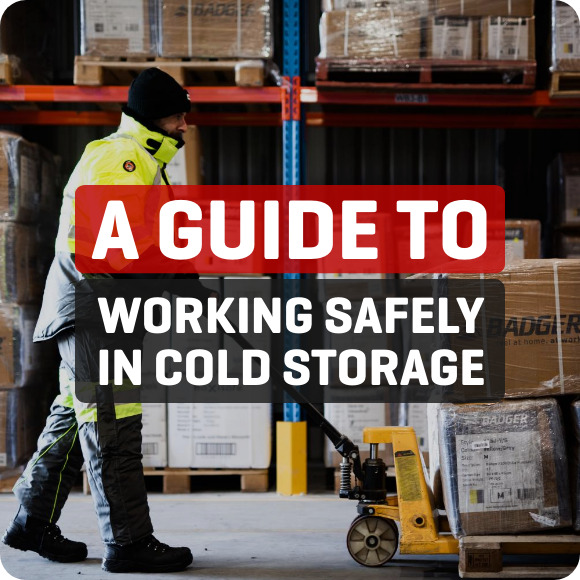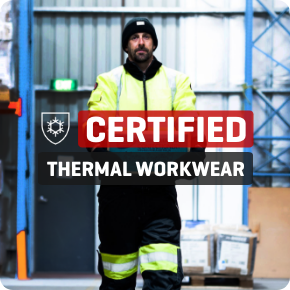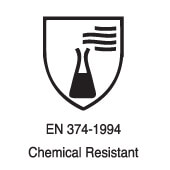A comprehensive guide to EN and Australian glove standards

What are EN glove standards and why do they exist?
Navigating health and safety regulations, like EN standards, can feel overwhelming. However, these standards play a crucial role in defining product attributes and protection levels, ensuring workplace safety. To maintain a safe work environment and protect your employees’ hands and wrists, it’s important to understand what each EN standard represents and how the gloves provide protection.
While European EN standards form the foundation for Australian/New Zealand (A/NZ) standards, they are not always identical. Most A/NZ standards mirror their European counterparts, but there are key differences, such as the testing methods for EN 511 and AS/NZS 2161.5:1998.
A very brief overview of the various standards.

EN 420 (AS/NZS 2161.2:1998) – General requirements for protective gloves
EN 388 (AS/NZS 2161.3:1998) – Protection against mechanical risks
EN 374 (ANS/NZS 2161.10:2005) – Protection against chemicals & micro-organisms
EN407 (ANS/NZS 2161.4:1999) – Protection against heat
EN511 (AS/NZS 2161.5:1998) – Standard for protection against cold
EN 421 (AS/NZS 2161.1:2005) – Protection against radioactive contamination & ionising radiation
EN 12477 – Protection against the risks of welding
Read on for in depth & interesting detail on each of these standards!
How do you read an EN standard symbol or pictogram?

Each EN standard has a symbol, often followed by numbers. These numbers indicate the glove’s performance in specific tests. For example, under EN 388 (mechanical risk), the second digit always represents cut resistance. A higher number means better protection. An “X” means the glove was not tested for that metric.
So what are EN Risk Categories then?
There are three main PPE risk categories that classify glove safety based on the risk level:
- Category I: Minimal Risk
Gloves designed for low-risk tasks, such as general cleaning, can be certified internally by the manufacturer. - Category II: Intermediate Risk
Gloves for tasks with intermediate risk, such as knife handling, must be tested and certified by an independent body. - Category III: Irreversible/Mortal Risk
Gloves protecting against high-risk hazards, like chemical exposure, require independent certification and quality assurance checks.
A detailed overview of each EN Glove Standard.

EN 420 – General requirements for protective gloves
AS/NZS 2161.2:1998
This standard refers to the basic and general requirements for protective gloves, such as their construction, design, comfort and efficiency. It can also apply to arm guards.
Some of the various factors considered are:
- pH level should be as close to neutral as possible
- leather gloves should have a pH value between 3.5 – 9.5
- are any substances used that are known to cause allergies
- sized with reference to common hand benchmarks in the country/region
 EN 388 – Standard for protection against mechanical risks
EN 388 – Standard for protection against mechanical risks
AS/NZS 2161.3:1998
This standard is one of the most relevant for Australian workers. It applies to gloves designed to protect against physical or mechanical risks such as abrasion, blades, punctures or tears.
1. Resistance to abrasion
Based on the number of cycles with sandpaper under a stipulated pressure to abrade the glove. The protection factor is then indicated on a scale from 1 to 4 depending on how many revolutions are required to make a hole in the material.
2. Blade cut resistance
Based on the number of cycles required to cut through the sample with a blade at a constant speed. The protection factor is then indicated on a scale from 1 to 5.
3. Tear resistance
Based on the amount of force required to tear the sample. The protection factor is then indicated on a scale from 1 to 4.
4. Puncture resistance
Based on the amount of force required to pierce the sample with a standard sized point. The protection factor is then indicated on a scale from 1 to 4.
5. Cut resistance (TDM Test)
In the EN388:2016 standard, this test is used for cut-resistant gloves where the material can dull the knife during testing. A knife cuts at a constant speed with increasing force until it breaks through the glove. The protection level is measured in Newtons, showing how much force is needed to cut through 20mm of the material. The highest protection level, “F,” requires 30 Newtons of force.
6. Impact protection
If the glove offers impact protection, the letter “P” will appear as the 6th and final symbol. If there is no “P,” it means the glove does not claim to provide impact protection.
 EN 374 – Standard for protection against chemicals & micro-organisms
EN 374 – Standard for protection against chemicals & micro-organisms
ANS/NZS 2161.10:2005
The EN 374 standard refers to the capability of gloves to protect from chemicals and/or micro-organisms. The pictogram is accompanied by a minimum of three letters, each of which refers to a different chemical (see table ?). For the letter to be shown the chemical must have a break through time of at least 30 minutes.
| Performance level | 1 | 2 | 3 | 4 | 5 | 6 |
| Breakthrough time (mins) | >10 | >30 | >60 | >120 | >240 | >480 |
| Performance level | Acceptable quality level unit | Inspection levels |
| Level 3 | > 0.65 | G1 |
| Level 2 | > 1.5 | G1 |
| Level 1 | > 4.0 | S4 |
| Code letter | Chemical | Cas number | Category |
| A | Methanol | 67-56-1 | Primary alcohol |
| B | Acetone | 67-64-1 | Ketone |
| C | Acetonitrile | 75-05-8 | Nitrile compound |
| D | Dichloromethane | 75-09-2 | Chlorinated paraffin |
| E | Carbon disulfide | 75-15-0 | Sulphur containing organic compound |
| F | Toluen | 108-88-3 | Aromatic hydrocarbon |
| G | Diethylamine | 109-89-7 | Amine |
| H | Tetrahydrofuran | 109-99-9 | Heterocyclic and ethereal compound |
| I | Ethyl acetate | 141-78-6 | Ester |
| J | n-Heptan | 142-85-5 | Saturated hydrocarbon |
| K | Sodium hydroxide 40% | 1310-73-2 | Inorganic base |
| L | Sulfuric acid 96% | 7664-93-9 | Inorganic mineral acid |
 EN407 – Standard for protection against heat
EN407 – Standard for protection against heat
ANS/NZS 2161.4:1999
This standard refers to the ability of the glove to protect against heat and/or fire. The nature and degree of protection is represented by the pictogram and six numbers beneath it. Each relate to a specific performance quality, as shown in the table below.
| Test | Performance level | |||
| 1 | 2 | 3 | 4 | |
| Resistance to burning (time in sec) | 20 | 10 | 3 | 2 |
| Resistance to Contact Heat (time in 15 sec) | 100 | 250 | 350 | 500 |
| Resistance to Convective Heat (time in secs) | 4 | 7 | 1 | 18 |
| Resistance to Radiant Heat (time in sec) | 5 | 30 | 9 | 150 |
| Resistance to Small Drops of Molton Metal (no. of droplets) | 5 | 15 | 25 | 35 |
| Resistance to Molton Metal Splash (weight in gms.) | 30 | 60 | 120 | 200 |
1. Resistance to flammability
The glove’s material is stretched out and then a gas flame is held against the material for around 15 seconds. After the gas flame is distinguished, the ‘afterburn’ time is measured, or length of time after that the material glows or burns.
2. Resistance to contact heat
The glove’s material is exposed to temperatures between +100°C and +500°C. The length of time it takes the material inside the glove to increase by 10°C intervals is then measured. 15 seconds is the accepted minimum time period for the first interval.
3. Resistance to convective heat
The amount of time is measured for the heat from a gas flame (80Kw/kvm) to increase the temperature of the glove’s inside material by 24°C.
4. Resistance to radiant heat
The glove’s material is stretched in front of a heat source with an effect of 20-40 kw/kvm. The average time is measured for heat penetration of 2.5 kw/kvm.
5. Resistance to small splashes of molten metal
The test is based on the total number of drops of molten metal required to increase the temperature by 40°C between the inside of the glove and the skin.
6. Resistance to large splashes of molten metal
Simulated skin is attached to the inside of the glove material. Molten metal is then poured over the glove material. The total number of grams is measured of how much molten metal is required to damage the simulated skin.

 EN511 – Standard for protection against cold
EN511 – Standard for protection against cold
AS/NZS 2161.5:1998
The EN511 standard is relevant for insulated gloves that protect against the cold. The glove’s performance is expressed by the pictogram and three digits representing three different protective qualities.
1. The first digit show resistance to convective cold (performance level 0-4)
2. The second digit show resistance to contact cold (performance level 0-4). The higher performance level the better insulating capacity.
3. The third digit show permeability to water (performance level 0 or 1)
0 = water penetration after 30 minutes
1 = no water penetration after 30 minutes.


EN 421 – Standard for protection against radioactive contamination & ionising radiation
AS/NZS 2161.1:2005
This standard is probably the scariest sounding of them all! However, the requirements for EN 421 certified gloves are actually quite simple. The glove has to be liquid proof and pass the same penetration test required in EN 374, which we’ve already discussed. Depending on the application of the gloves, they may also require an air pressure leak and ozone cracking test.
To protect against ionising radiation, the glove must contain a certain amount of lead or equivalent metal.

 EN 12477 – Protection against the risks of welding
EN 12477 – Protection against the risks of welding
This standard certifies gloves designed to provide protection for both the hand and wrist while welding and is really a combination from testing EN 388 and EN 407. Welding gloves provide resistance to small splashes of molten metal, short exposure to convective heat/radiant heat and blade cuts.
Type A refer to gloves that shall provide a slightly higher level of protection against heat.
Type B refer to gloves that provide lower protection against heat, but they are more flexible and pliable.
Source: Ansell
Last Updated: September 2024


 EN 388 – Standard for protection against mechanical risks
EN 388 – Standard for protection against mechanical risks EN 374 – Standard for protection against chemicals & micro-organisms
EN 374 – Standard for protection against chemicals & micro-organisms EN511 – Standard for protection against cold
EN511 – Standard for protection against cold


3 Comments. Leave new
Thanks for the very good explanation between EN & AS/NZS. However, I would like to ask is the AS/NZS certification required for gloves already with the EN certification when being sold here in Australia? or will the EN certification suffice?
Hello Max,
Generally the AS/NZS and EN standards are identical, so if a glove is certified to EN, it will be compliant to AS/NZS as well. There are a few instances where EN standards have been revised, and AS/NZS haven’t followed them, however.
If you need to find out more details, let us know!